Folk art of India forms
India is a land of rich cultural heritage and a home to many art forms. Being culturally diverse and distinct, a variety of art forms have evolved over the years; some untouched by modernisation, some adapting to new paint colours and materials. Here’s a look at folk painting forms that are still practiced in select parts of the country:
Madhubani
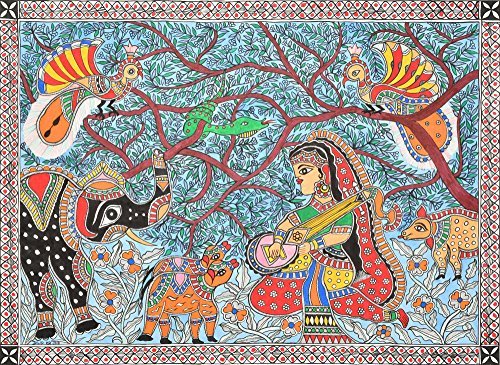
Madhubani painting of India crossed the traditional boundaries and started reaching connoisseurs of art, both at the national as well as the international level. Most of these paintings or wall murals depict gods, flora and fauna. The natural themes that are used include the Sun, the Moon and the religious plants like tulsi.The Madhubani paintings have a very distinct look and charm, the legacy of which has been contemporarily carried forward in the present generations.
Miniature Paintings
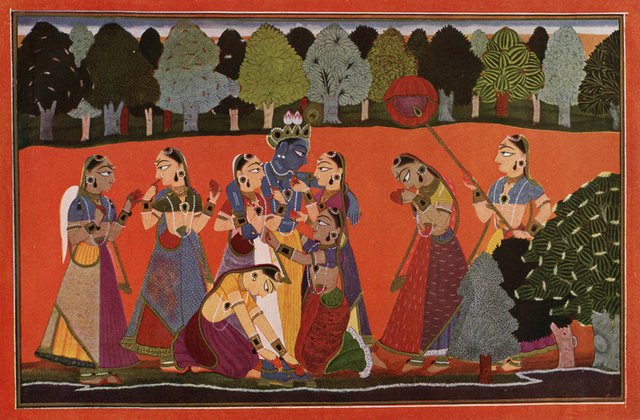
Miniature painting of India comprises of the Ragas i.e., the musical codes of Indian classical music. There were a number of miniature schools in the country, including those of Mughals, Rajputs and the Deccan. The evolution of Indian Miniatures paintings started in the Western Himalayas, around the 17th century. This covers a large area from jaisalmer and Bikaner in the west to Kotah and Bundi in south-east rajasthan and to Datia and Orchha in North Madhya Pradesh.It became a cheap medium to depict the scenes of dance, parties and sensuous palace life.
Phad
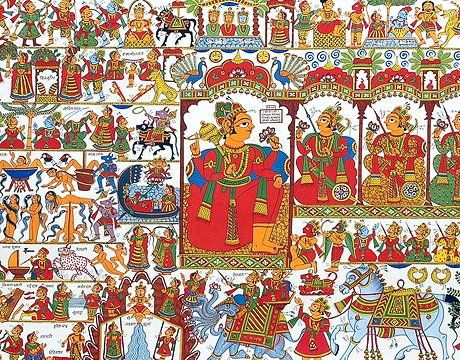
Phad Art is a style religious scroll painting and folk painting, practised in Rajasthan state of India. The artist prepares a mixture of wheat/rice flour and boils it with water till it turns in a thick fine paste. All Phad paintings have certain common features. Every available inch of the canvas is crowded with figures. The 30- or 15 feet-long canvas or cloth that it is painted on is called phad.
Warli
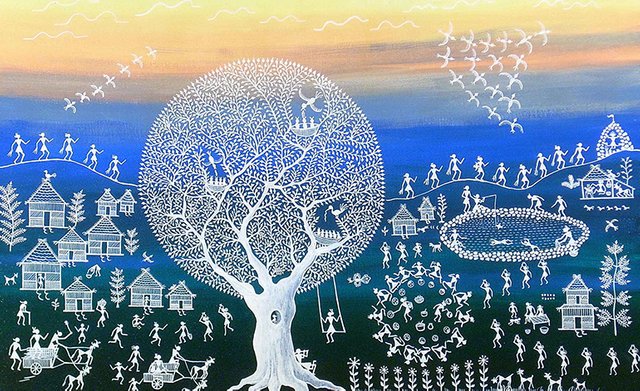
Warli art is a beautiful folk art of Maharashtra, traditionally created by the tribal women. Warli paintings are painted white on mud walls. The paintings are beautifully executed and resembles pre-historic cave paintings in execution and usually depict scenes of human figures engaged in activities like hunting, dancing, sowing and harvesting. It is mainly the use of circles, triangles and squares to form numerous shapes and depict daily life activities like fishing, hunting, festivals, dance and more. In Warli paintings it is rare to see a straight line. A series of dots and dashes make one line. The artists have recently started to draw straight lines in their paintings.
Gond
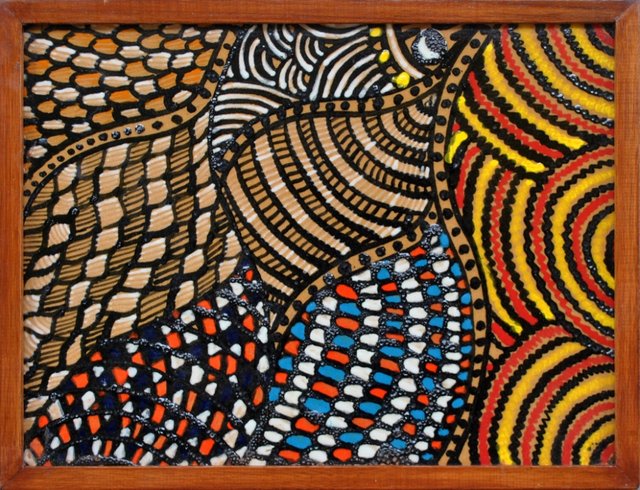
The Gonds traditionally painted on mud walls of their houses. The artists use natural colors derived from charcoal, colored soil, plant sap, leaves, and cow dung. This mystical art form is created by putting together dots and lines.Gond art comes with the belief that a good image brings good luck. This inherent belief led the Gonds to decorate their houses and floors with traditional tattoos and motifs.The colours come from charcoal, cow dung, leaves and coloured soil. If you look closely, it is made up of dots and lines. Today, these styles are imitated, but with acrylic paints.
Congratulations @arti2! You have completed some achievement on Steemit and have been rewarded with new badge(s) :
Click on any badge to view your own Board of Honor on SteemitBoard.
For more information about SteemitBoard, click here
If you no longer want to receive notifications, reply to this comment with the word
STOPDo not miss the last announcement from @steemitboard!